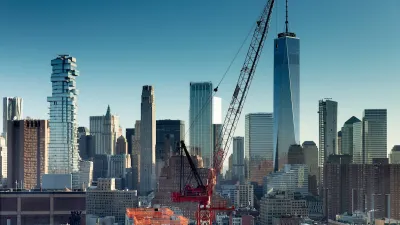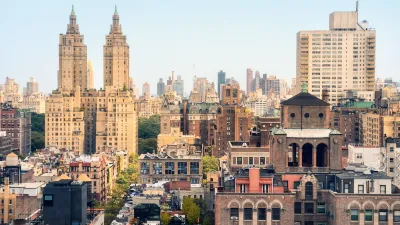While the rezoning of neighborhoods like West Chelsea garnered plenty of attention, less analysis has been devoted to the impacts of zoning changes enacted by the Bloomberg Administration in places like Ozone Park.
Sarah Laskow starts her examination of the Bloomberg’s many downzoning efforts with the 530 blocks in Ozone Park, at the end of the A-train, which was the “second-largest rezoning in the entire twelve years of the Bloomberg administration.” The Ozone Park rezoning, according to Laskow, was “more about determining what won’t be built than what will.”
“One of the main goals of this change, common in Bloomberg-era rezonings, was to ‘reinforce neighborhood character.’ That sounds innocent enough, but it generally meant limiting new construction and codifying the status-quo of the neighborhood—giving the people who already lived there power to keep these places from changing.”
In fact, says Laskow, instead of providing a building envelope that will allow the city to grow into it, “The Bloomberg administration has left behind a building envelope that’s more like a corset, pulled tight to the city’s body, cinching around places that were already small and boosting its curves.”
And for all the attention devoted to new high rises allowed by rezoning in other parts of the city, “The Bloomberg administration’s 120 rezonings did as much to change the city’s shape in places where it limited growth as where it let developers build tall, and, as the city expands, those limits could become a problem.”
FULL STORY: The quiet, massive rezoning of New York

Planetizen Federal Action Tracker
A weekly monitor of how Trump’s orders and actions are impacting planners and planning in America.

Restaurant Patios Were a Pandemic Win — Why Were They so Hard to Keep?
Social distancing requirements and changes in travel patterns prompted cities to pilot new uses for street and sidewalk space. Then it got complicated.

Maui's Vacation Rental Debate Turns Ugly
Verbal attacks, misinformation campaigns and fistfights plague a high-stakes debate to convert thousands of vacation rentals into long-term housing.

Boulder Eliminates Parking Minimums Citywide
Officials estimate the cost of building a single underground parking space at up to $100,000.

Orange County, Florida Adopts Largest US “Sprawl Repair” Code
The ‘Orange Code’ seeks to rectify decades of sprawl-inducing, car-oriented development.

Maui's Vacation Rental Debate Turns Ugly
Verbal attacks, misinformation campaigns and fistfights plague a high-stakes debate to convert thousands of vacation rentals into long-term housing.
Urban Design for Planners 1: Software Tools
This six-course series explores essential urban design concepts using open source software and equips planners with the tools they need to participate fully in the urban design process.
Planning for Universal Design
Learn the tools for implementing Universal Design in planning regulations.
Heyer Gruel & Associates PA
JM Goldson LLC
Custer County Colorado
City of Camden Redevelopment Agency
City of Astoria
Transportation Research & Education Center (TREC) at Portland State University
Camden Redevelopment Agency
City of Claremont
Municipality of Princeton (NJ)





























